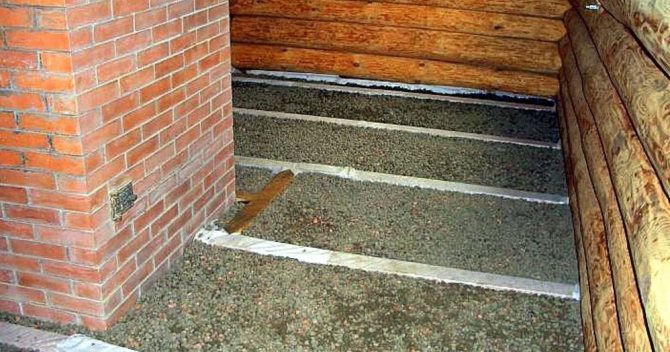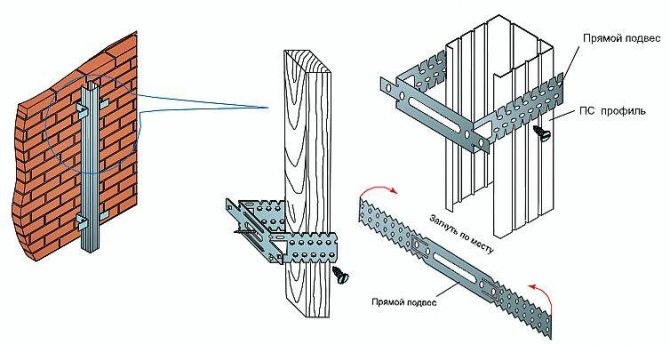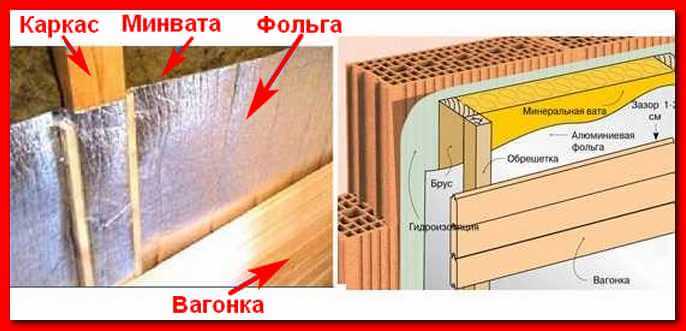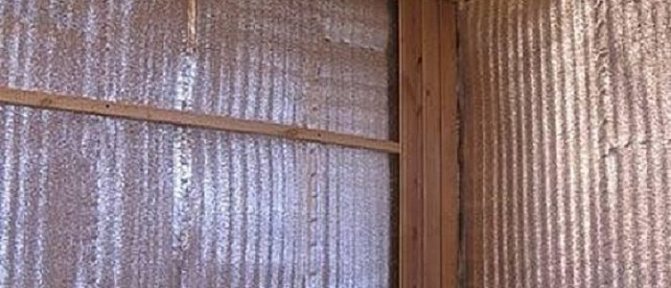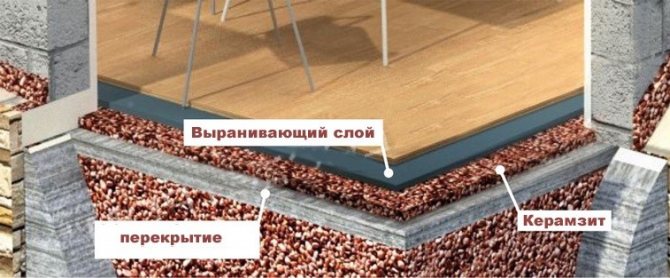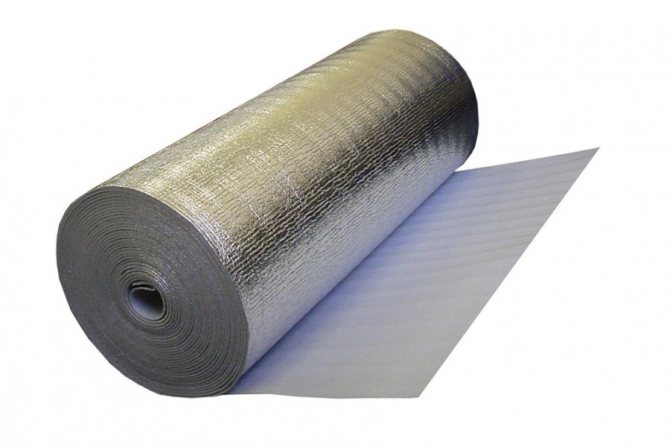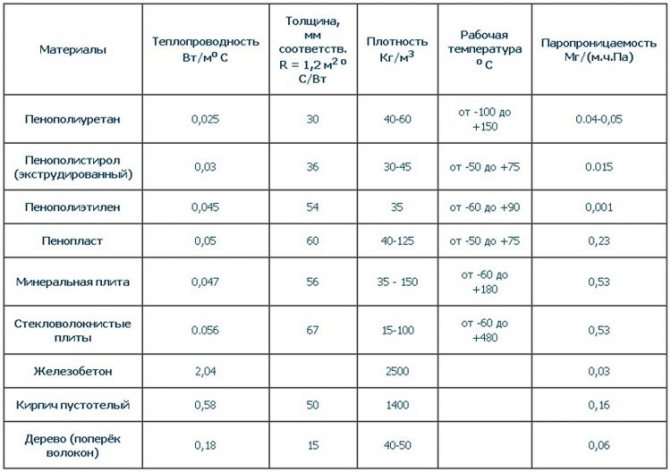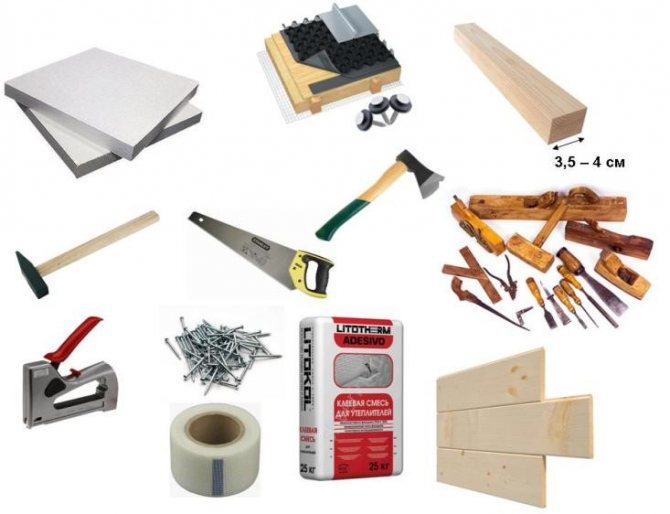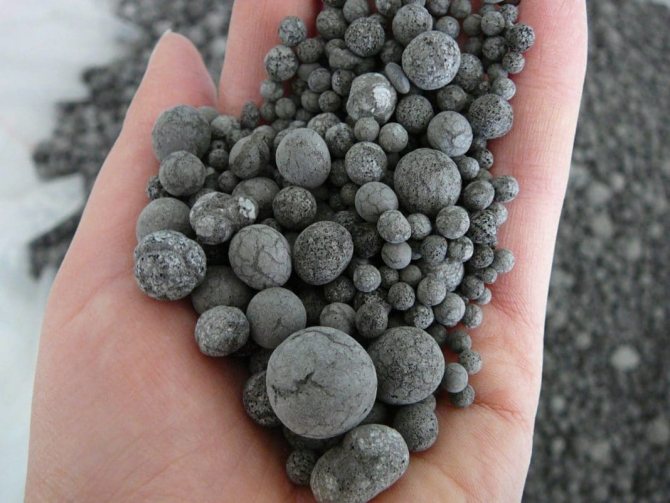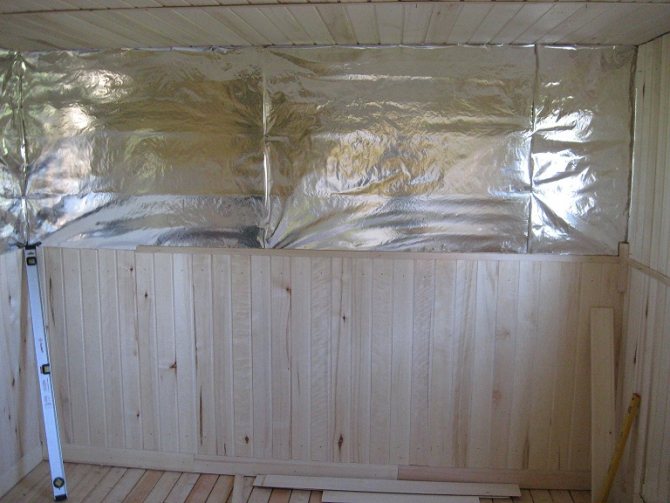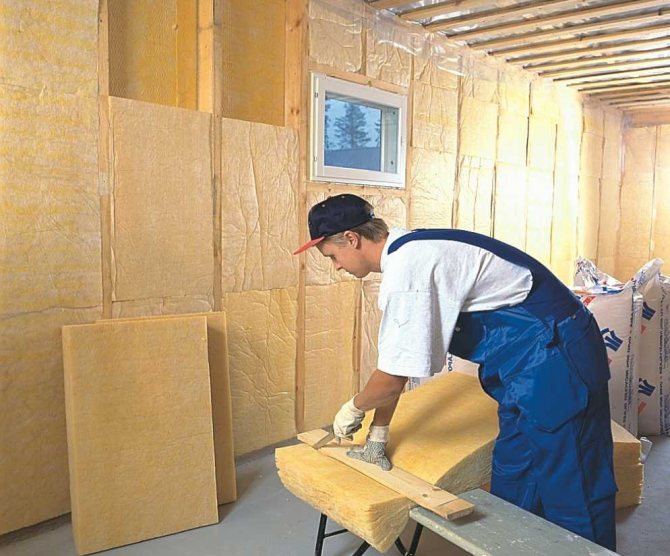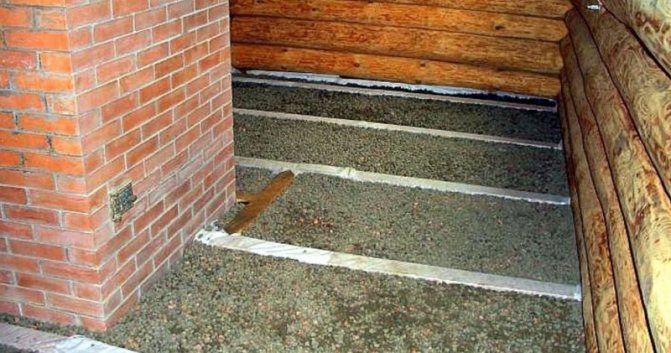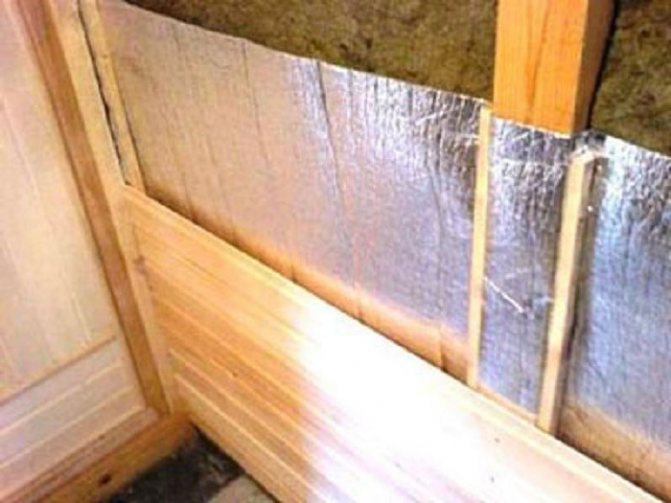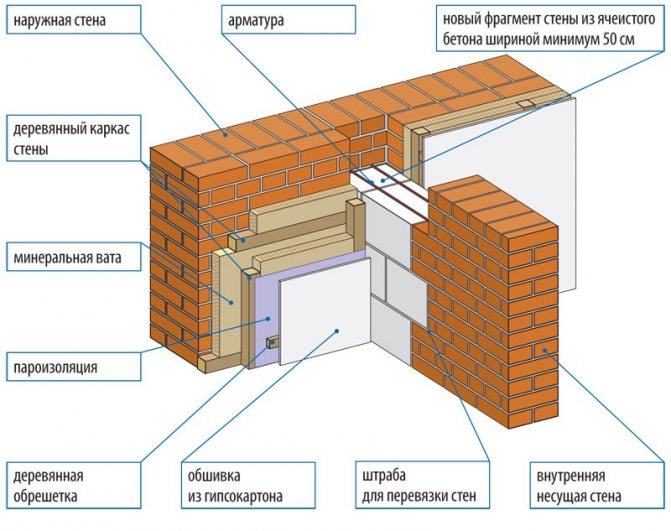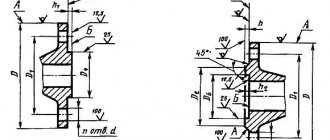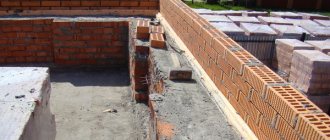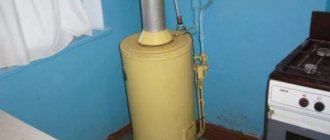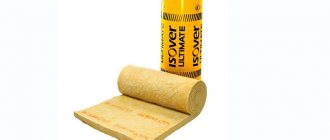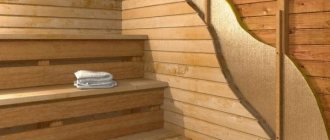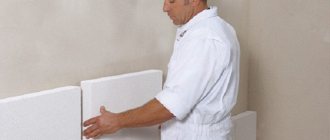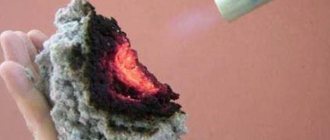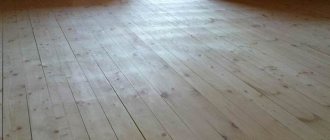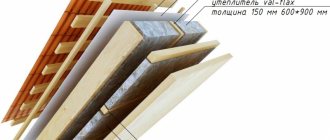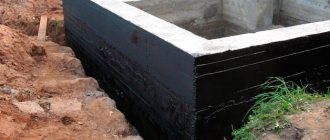To increase the heating rate and thereby save on wood, the insulation of a brick bath will help. Although the brick has such qualities as strength, reliability, fire resistance, it also has one significant drawback. The high thermal conductivity of this material creates problems in heating the steam room and maintaining a high temperature in it. Insulating the walls in a brick bath will help solve this disadvantage and turn it into an advantage.
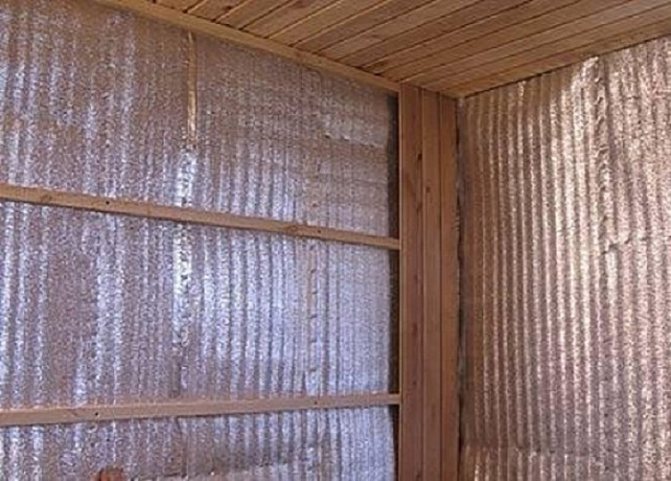
How to insulate a wall in a brick bath
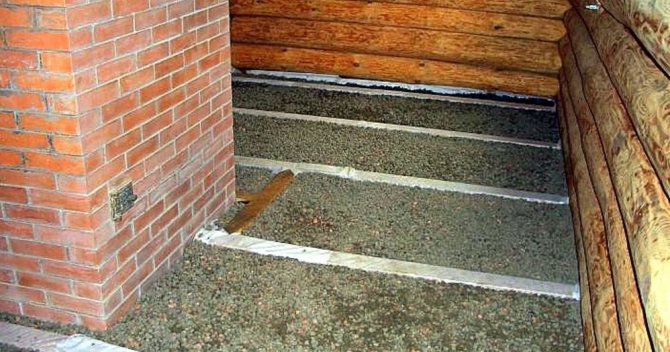

The decoration of the steam room should be carried out using heat insulators that do not emit substances harmful to the human body. For this, insulation materials that are not susceptible to moisture from fiberglass or basalt are suitable. Bath insulation should be comprehensive and include insulation of elements such as the floor, foundation, roof and walls. Let's consider in detail how to properly insulate, and what methods are used for each element.
Foundation
The concrete of which the foundation is made is a strong conductor of cold. Before erecting the wall, it is insulated with roofing material so that cold and moisture does not get from the ground. However, this is not enough. It is necessary to finish the walls of the foundation from the base in order to increase heat storage and minimize the subsidence of the foundation
This is important, since in winter the earth expands under the influence of cold, while cracks form in the foundation that destroy it. Of the materials, it is worth choosing penoplex, it is cheaper than polyurethane foam, but its installation takes longer
The second material is also quite good and can be collected in a day.
Bath floors
To protect the floor from ground moisture, an expanded clay pillow is required before installing the slabs. The thickness of its layer depends on the thickness of the walls, and should be twice as large. A basement is not needed for a bath, so expanded clay is filled completely over the entire inner surface of the foundation. The floor in the bath is preferably made of concrete slabs. It handles moisture better than wood.
Wall decoration
The insulation is fixed on a pre-fixed cobbled lathing, it will prevent the material from slipping, protect it from compression, preserving its original properties. When choosing a heater, you should take into account what type is used: expanded clay, foam phone, isolon, or others. The scheme of insulation of bath walls:
- The masonry is done in several passes, the brick is periodically filled with a prepared lime solution.
- Insulation boards are located from the inside, between the load-bearing wall and the finish.
- A lining or wooden panels are attached on top of the insulation.
Roof trim
Complex insulation of a steam room in a brick bath cannot do without a ceiling. Steam primarily rises upwards, which is why the roof of the steam room is especially susceptible to high temperatures and high humidity. Therefore, he needs to be given no less attention than the walls. For the roof, experts in insulating the bath from the inside recommend using mineral wool with a double-sided waterproofing coating. Foil-clad fiberglass works well for these purposes. The use of expanded polystyrene is not recommended. At such temperatures, it releases substances hazardous to the body.
https://youtube.com/watch?v=wm1q_X5klK0
Materials used
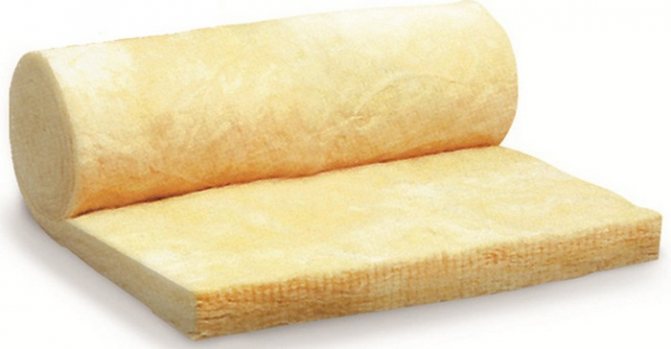

After choosing the appropriate method, you can proceed with the selection of the required material. There are a large number of different building materials on the market, and in such a variety it is very difficult to choose. It is preferable to use various fiber insulation materials such as glass wool or ecowool.These materials are not susceptible to dampness, insects are not afraid of them, they are easy to use and durable.
High-quality ecowool serves for many years without fear of moisture, fire, mold and parasites.
Thermal insulation of a brick bath does not imply the use of foam and materials based on it. It does an excellent job of thermal insulation, but has a high flammability. Therefore, its use is dangerous from the point of view of fire safety, even though there are special insulating coatings that prevent the spread of fire. When heated, the foam produces toxic substances that are harmful to the human body.
Insulation of a brick bath from the inside
How to insulate the walls of a brick bath from the inside? It is most effective to insulate the inner surface of the walls of a brick bath with the help of natural heat-insulating materials that perfectly retain heat, but do not emit any harmful substances at high temperatures. In particular, sheets based on mineral wool, produced in the form of rolls or individual mats, are excellent for these purposes.
The only drawback of such a heater is the ability to absorb moisture, which, by definition, is always enough in any bath. Therefore, the heat-protective layer will require additional waterproofing, which protects the mineral wool from steam and water.
The procedure for installing insulation on internal walls will be as follows:
- a supporting frame is being erected on a brick wall from wooden slats;
- insulating material is laid in the resulting cells. In addition to mineral wool, more modern materials can be used here with great success. For example, foil-clad foam is not only completely insensitive to moisture and temperatures of several hundred degrees, but due to the shiny surface of the foil, it is able to reflect heat back into the bathhouse;
- the entire structure is covered with a layer of waterproofing (polyethylene, foil, etc. To ensure complete moisture resistance, the waterproofing material should be laid with an overlap of 10-20 cm. To give the joints additional strength, all joints should be fixed with thin and flat wooden slats.
In order to improve aesthetics, thermal insulation is usually not left open, but covered with wooden clapboard.
In addition to the walls, the internal thermal insulation of a brick bath should also include measures to reduce heat loss through the floors. The sequence of actions here will be as follows:
- a layer of vapor barrier is laid on the subfloor cleaned of dust and dirt;
- heat-insulating mats are lined and fixed in one way or another;
- a layer of waterproofing is laid;
- a finishing floor is equipped with the widest boards with a thickness of at least 40 mm.
It is very important to consider the material from which the sub-floor is made. If it is formed by boards, then they will need to be pre-treated with a means to prevent wood rotting .. A concrete subfloor itself is capable of playing the role of thermal insulation
Therefore, even at the stage of its arrangement, one should take care of imparting heat-saving properties. This is achieved by the following flooring technology:
The concrete subfloor itself is capable of playing the role of thermal insulation. Therefore, even at the stage of its arrangement, one should take care of imparting heat-saving properties. This is achieved by the following flooring technology:
- a layer of sand about 5-10 cm thick is poured into the pit;
- a solid heat insulator (foam) is laid;
- a mixture of cement, sand and crumbled foam is poured;
- sheets of roofing material are overlapped;
- reinforcing mesh is lined;
- a concrete solution is poured with the addition of fine crushed stone;
- a finishing plank floor is created at a height of 10-20 cm.
The resulting design is advantageous in that it is ventilated. This means a significant increase in the service life of both the finished floor and the heat-insulating concrete base underneath.
How to insulate the floor in a bath? You will find out the answer to this question by reading this article.
And in this article, read about the bath roof insulation.
Thermal insulation of walls from the outside
External work on thermal insulation of a brick bath are carried out using the same mineral wool insulation, which retains heat well, is incombustible and capable of performing the functions of a sound insulator. If rolled insulation is used, then it is easiest to fix it on the outer walls with wooden strips or slats.
When use of thermal insulation in the form of mats based on mineral wool, the technology for performing work will be slightly different:
- a crate is constructed from a metal profile and corners, which is attached with dowels to the outer surface of the wall;
- the cells of the lathing are butt-filled with heat-insulating mats;
- the joints between the mats are glued with construction tape for strengthening;
- a layer of waterproofing is applied.
The final stage will be wall cladding with decorative materials (siding, lining, etc.)
Meanwhile, it is quite possible to use foam sheets to insulate brick baths. The procedure for warming a bath with foam heat-insulating material would be like this:
- the surface of the brickwork is freed from all types of contamination;
- possible flaws in the form of chipped bricks or deep seams are carefully plastered;
- using glue, foam sheets are glued to the wall;
- after the glue dries, the foam is additionally attached with special dowels with wide caps. The dowels should be screwed in at five points of each foam sheet: a few centimeters from the corners and in the middle;
- the joints between the sheets of the heat insulator are coated with glue;
- reinforcement mesh is applied and fixed;
- the resulting surface is plastered.
To give the wall extra strength plastering is best done in two layers.
Metal sauna stoves (wood-burning). You will read about this in our next article. And this article tells about the insulation of the ceiling in the bath.
Ceiling insulation
With poor-quality thermal insulation, up to a quarter of all the heat generated by the furnace can go through the ceiling
Therefore, to reduce losses, ceiling insulation should be given no less attention than in the case of walls. The most suitable insulating material for these purposes is lightweight and non-combustible fiberglass.
Ceiling insulation works in the bath are carried out as follows:
- canvases or mats made of fiberglass are laid out on the boards of the ceiling;
- a mixture of equal parts of sawdust, sand and clay is poured over it. The optimum thickness of this layer is 20-25 cm;
- after the previous layer has dried, sheets of foam are laid out on it;
- the entire surface is filled with a small layer of cement screed.
In addition, ordinary expanded clay can provide excellent thermal insulation. With a backfill thickness of about 30-40 cm, it will be able to reliably retain precious heat.
Thermal insulation of a bath from foam blocks. Read about it here.
And this article talks about the insulation of a wooden bath.
Here https://ru-house.net/stroitelstvo/ you will find many more informative articles about building a house.
Correction of insulation and ventilation by efflorescence
Efflorescence can be removed with special products.
By themselves, efflorescence on brickwork is not a problem for the load-bearing wall, but they may indicate that the insulation scheme is not working correctly, leading to a violation of moisture transfer. In winter, the partial pressure of gases dissolved in water increases.The capillary movement of the liquid through the thickness of the brick increases in the direction from heat to cold. Internal condensation and capillary flow cause waterlogging of the layer located 2 - 3 cm from the outer surface of the wall.
At subzero temperatures, waterlogging is not striking due to the freezing of bricks from the street side. In the spring, the condensate accumulated over the winter begins to intensively stand out on the surface, carrying water-soluble salts with it.
https://www.youtube.com/watch?v=1BMehi4cwNU
If efflorescence is equally formed on all walls, then the reasons can be covered in the quality of a brick, in the composition of the solution, in violation of the masonry technology. However, in the case of localization of salts on separate walls of the bath and their sections, it makes sense to revise the insulating sandwich, provided that the influence of the unsuccessful design of the ebb tide is excluded. This must be done in order to level the operating mode along the entire bearing perimeter in order to increase the building resource.
Add foil insulation
- add foil insulation, if it was not installed earlier, or eliminate possible defects of this layer (for example, poor-quality sealing of joints);
- provide a ventilated gap between the vapor barrier and the main thermal insulation;
- add an exhaust vent.
We offer you to familiarize yourself with: Internal and external insulation of a bath from blocks
Thermal insulation of the walls of the bath process features
When you have completed the process of floor insulation, we begin wall insulation from the inside.
Please note that you do not need to loosen or process a brick tub from the inside of the bathhouse, since this wall surface will later disappear behind the wood sheathing for the steam room
The only thing that needs to be done is to saturate the brick wall in order to protect it from bacteria, but this procedure is relevant only for rooms such as steam rooms and shower rooms.
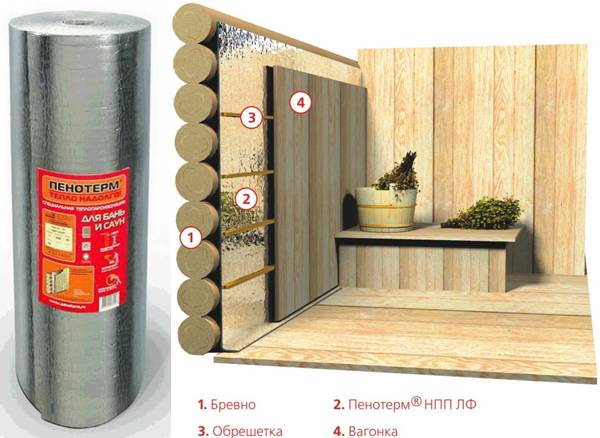

The walls of the baths should be insulated in exactly the same way as other rooms, and not only baths. However, there are a number of process features that are unique to this type of work:
- to reduce the number of possible heat losses, close the gaps between the wall and the windows using polyurethane foam; the frame for mounting the cladding must be made of wooden beams, then attach it directly to the brick tub; it is highly undesirable to use suspensions and metal profiles for work, since they have the property conduct heat; insulation in the form of mineral wool or polystyrene plates is placed in the crate cells: the insulation is attached to the tub with dowel-umbrellas or with a special adhesive; if you are going to glue the heat insulator, then it is better to treat the brick wall of the bath with a penetrating primer before that.
So, when the main insulation has already been applied to the walls, it is necessary to apply a layer of vapor barrier, which you can use kraft paper, glassine or foil film, which, by the way, will be the most optimal material for the steam room and shower room. For example, the same kraft paper, when used in places of high humidity, can become soaked over time and become unusable.
If necessary, fill the counter battens on the battens of the sheathing. This will create a gap between the outer skin and the vapor barrier. Then, the lining should be attached to the counter-batten using thin wooden strips.
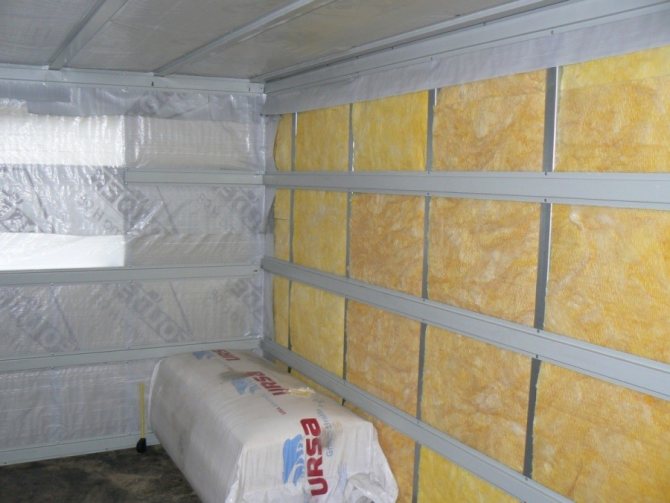

When your bath or sauna has a large area and occupies several floors, it is not necessary to insulate the walls from the inside everywhere in order to prevent strong heat losses during its operation. If a loggia is attached to the bath, it must also be insulated. You should also install good entrance doors with at least two sealing circuits.
Final finishing
The interior cladding of the steam room is usually made of wood materials. Linden or aspen lining is considered ideal.However, aspen lining eventually loses its pleasant color, although it is famous for its healing properties.
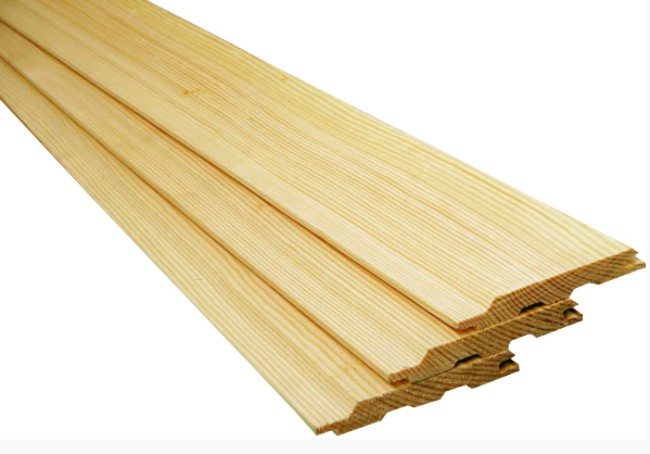

Photo: linden lining
A more practical option is to use pine lining. The price is much lower, and the aroma and benefits are almost the same.
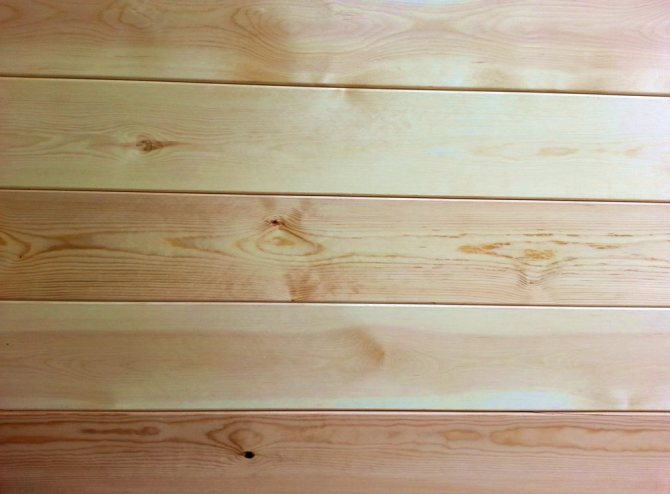

Pine lining


Examples of different types of lining
If you made the insulation of a brick bath from the inside correctly, then you will not have a draft or condensation, but only a pleasant aroma of wood and a feeling of comfort. (see also the article Projects of brick baths - what you should pay attention to)
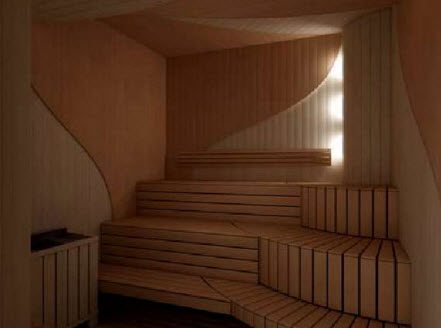

Everything is ready, you can take a steam bath!
Insulation outside
Before starting to insulate a brick bath from the outside, it is necessary to carefully analyze the question of laying bricks:
- The mortar should fill all the space between the bricks evenly, at the same thickness; The first row of brickwork should be made only of solid elements; The beams rest on the butt row; As for clay bricks, before laying them, it is necessary to thoroughly moisten the brick, especially, if the bath is arranged in the summer.
In order to insulate the bath from the outside of the building, it is necessary to lay expanded clay between the walls with a thickness of 40-50 centimeters. You can also use slag, fluff of lime, sawdust and sand for this.
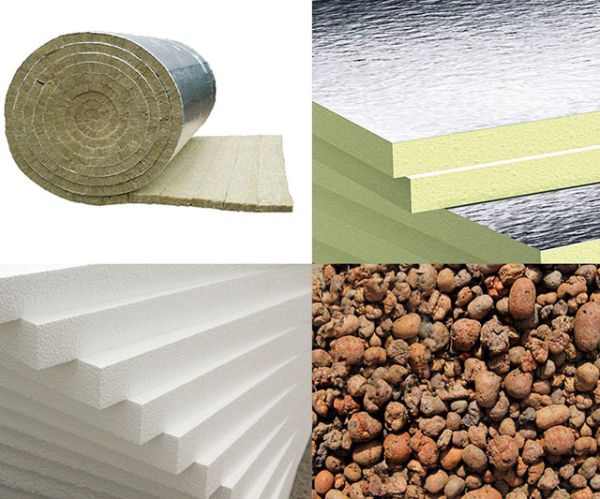

But it will be more rational to insulate the walls of the bath from the outside with a slab insulation. The direct fixation of the insulation layers takes place with the help of a synthetic binder. Plates are placed in spacers at a distance of half a meter from each of the plates. Read the instructions on how to choose a stove for a bath.
It is worth installing the slab insulation so that small gaps remain between the elements. They are necessary for ventilation of the facade, because otherwise, the entire surface will be covered with mold during the rainy season.

